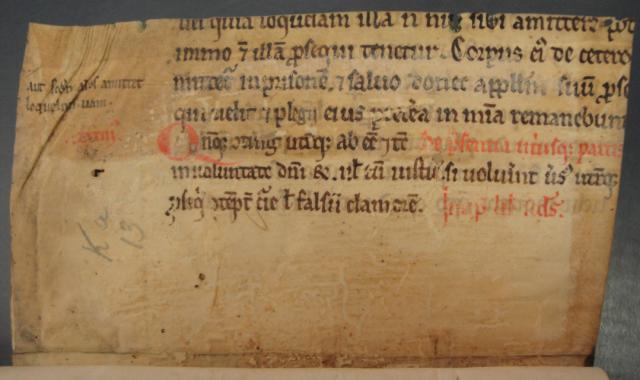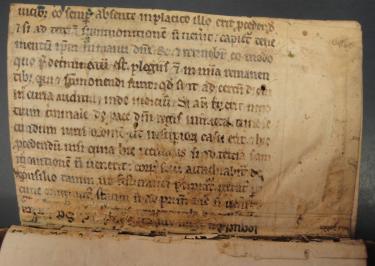Letters of the law
Most of the fragments in the Harsnett collection have not been studied, but a few have been. Even when they have, though, there is still more to be found.
An example of this is provided by the two fragments which come from an early textbook of English common law, the Tractatus de legibus et consuetudinibus regum Angliae, usually known by the name of its purported author, Glanvill. In the standard twentieth-century edition of the text, they are listed as Col. The editor, G. D. G. Hall, did fine work in discerning the textual tradition of Glanvill, and divided it into two: what he called the 'alpha' and the 'beta' text. He clearly had studied closely the fragments in the Harsnett collection and was able to place them in the earlier, 'alpha' tradition.
What Hall did not comment upon was the script. Its aspect suggests it comes from the end of the twelfth century, making this 'lost manuscript' a notably early witness to a text datable to between 1187 and 1189. Its status as an early copy is confirmed by an element that Hall did mention: the inclusion, as marginal cursive additions, of names for some of the authorities cited periphrastically in the text.
There is, though, a further feature of these fragments to which attention should be drawn. One of the ways that the 'beta' tradition differs from the 'alpha', according to Hall, was that the 'beta' texts divided the work into books and chapters. If you click on the main image at top right of this page, you will see that there is a rubricated chapter heading and a book division. In other words, this is an 'alpha' text with 'beta' paratext. Do these small flyleaves capture the transition of the work from one to the other, as it was happening, soon after its original composition?

